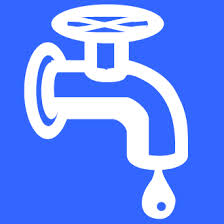Long-term groundwater monitoring networks can provide essential information for the planning and management of water resources. Budget constraints in water resource management agencies often mean a reduction in the number of observation wells included in a monitoring network. A network design tool, distributed as an R package, was developed to determine which wells to exclude from a monitoring network because they add little or no beneficial information. A kriging-based genetic algorithm method was used to optimize the monitoring network. The algorithm was used to find the set of wells whose removal leads to the smallest increase in the weighted sum of the (1) mean standard error at all nodes in the kriging grid where the water table is estimated, (2) root-mean-squared-error between the measured and estimated water-level elevation at the removed sites, (3) mean standard deviation of measurements across time at the removed sites, and (4) mean measurement error of wells in the reduced network. The solution to the optimization problem (the best wells to retain in the monitoring network) depends on the total number of wells removed; this number is a management decision.
Personal Author Fisher, J. C.
For more information please contact NTIS 1-800-553-6847 Mon -Fri 8am – 5pm est or go to www.ntis.gov
![NTRLlogo3[1]](https://ntis.scienceblog.com/files/2015/05/NTRLlogo31.png)
ground water
Factors Affecting Public-Supply-Well Vulnerability to Contamination: Understanding Observed Water Quality and Anticipating Future Water Quality
 As part of the U.S. Geological Survey (USGS) National Water-Quality Assessment (NAWQA) Program, a study was conducted from 2001 to 2011 to shed light on factors that affect the vulnerability of water from public-supply wells* to contamination. The study was designed as a follow-up to earlier NAWQA studies that found mixtures of contaminants at low concentrations in groundwater near the water table in urban areas across the Nation and, less frequently, in deeper groundwater typically used for public supply. Although contaminants were less frequently detected in public-supply wells than in shallower monitoring wells, a separate study showed that contaminant concentrations were greater than drinking-water standards or other human health benchmarks in about 22 percent of public-supply-well samples.
As part of the U.S. Geological Survey (USGS) National Water-Quality Assessment (NAWQA) Program, a study was conducted from 2001 to 2011 to shed light on factors that affect the vulnerability of water from public-supply wells* to contamination. The study was designed as a follow-up to earlier NAWQA studies that found mixtures of contaminants at low concentrations in groundwater near the water table in urban areas across the Nation and, less frequently, in deeper groundwater typically used for public supply. Although contaminants were less frequently detected in public-supply wells than in shallower monitoring wells, a separate study showed that contaminant concentrations were greater than drinking-water standards or other human health benchmarks in about 22 percent of public-supply-well samples.
Personal Author M. A. Thomas M. L. Jagucki S. M. Eberts
For more info go to: http://www.ntis.gov/search/product.aspx?ABBR=PB2014101068 or call NTIS 1-800-553-6847 Mon – Fri 8am – 5pm est.